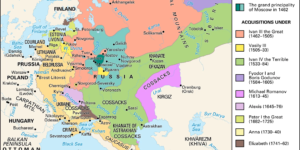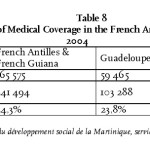Global Financial Governance Ten Years After The Crisis: An Interview With Ilene Grabel
No Comments yetThe financial crisis of 2008, which resulted in the near meltdown of the world’s financial and banking system, has left a lot of questions unanswered regarding reform and whether enough has been done to avoid another similar crisis. A leading authority on financial governance, Ilene Grabel, Professor of International Finance at the University of Denver, spoke to C. J. Polychroniou about where things stand today ten years after the biggest capitalist crisis since the Great Depression.
J. Polychroniou: It’s been ten years since the outbreak of the financial crisis, and the verdict on the effect of that crisis on global financial governance remains largely ambiguous. Nonetheless, all this may soon change as a result of the publication of your recent book titled When Things Don’t Fall Apart: Global Financial Governance and Developmental Finance in an Age of Productive Incoherence. In this book, you argue that much has in fact changed since the East Asian financial crisis of 1997-98 and especially since the global financial crisis of 2008. In what ways has global financial governance changed over the last couple of decades?
Ilene Grabel: I argue that the contradictory effects of the East Asian financial crisis (EAFC) of 1997-8 laid groundwork for consequential (albeit paradoxical) shifts in several dimensions of global financial governance and developmental finance that deepened during and since the global crisis. The EAFC solidified neoliberalism through the leverage granted to external and domestic actors who had been previously unable to secure liberal reform prior to the crisis. The EAFC also inaugurated a gradual, uneven rethinking of capital flow liberalization. In addition, the crisis gave the IMF a vast new client base. But the crisis was ultimately costly to the institution because its crisis response led EMDEs to implement strategies (such as reserve accumulation) to escape its orbit. Reserve accumulation was enabled by the fortuitous global economic conditions that followed the EAFC. The Asian Monetary Fund (AMF) proposal catalyzed by the EAFC was quickly scuttled by tensions between Japan and China, tensions that were adroitly exploited by the IMF and the U.S. government, both of which strongly opposed the AMF. Though the AMF proposal failed, the crisis ultimately bore fruit in the region and beyond. Not least, it yielded the creation of a currency reserve pooling arrangement among the members of the Association of Southeast Asian Nations plus Japan, China, and South Korea (ASEAN+3). More broadly, the EAFC stimulated in other regions of the developing world an interest in regional mechanisms that could deliver countercyclical liquidity support and long-term project finance through institutions that are, to some degree or other, independent of the Bretton Wood Institutions (BWIs, namely, the IMF and World Bank). In sum, the EAFC marked the beginning of the end of a unified neoliberal regime.
In When Things Don’t Fall Apart I take on the widely held but incorrect view of the global crisis, which I call the “continuity thesis.” The continuity thesis holds that the opportunity for meaningful reform created by the global crisis was lost, and that nothing of significance has changed, especially as concerns EMDEs. Against this view I argue that the Asian and especially the global crisis catalyzed disparate, disconnected innovations across several dimensions of global financial governance, and that these discontinuities matter deeply for EMDEs. But to be clear: I do not argue that the global crisis occasioned an abrupt, radical shift from one regime of global financial governance to another. It hasn’t. Indeed I argue that non-trivial continuities in global financial governance are also readily apparent. But I argue–and this is the key point for me–that a chief problem with the continuity thesis is that it understands radical, systemic ruptures as the true test of meaningful change.
My chief goal in the book is to defend what I call the “productive incoherence thesis.” I argue that the changes we confront today appear inconsistent, contradictory, uncoordinated, ad hoc, fragmented, partial, uneven, and evolutionary. The conjunction of discontinuities and continuities is imparting incoherence to global financial governance and developmental finance. But I argue provocatively that this incoherence is productive of development rather than debilitating. Emergent “productive incoherence” is beneficial for EMDEs because it is creating a more complex, dense, fragmented, and pluripolar direction in global financial governance, and consequently expanding space for policy and institutional experimentation, new networks of cooperation, financial stability and resilience, financial inclusion, and learning by doing and learning from others.
I argue that emergent productive incoherence can be understood most fully within what I call a “Hirschmanian mindset,” by which I mean an understanding of social and regime change informed by Albert Hirschman’s key theoretical and epistemic commitments. The alternative vision of change that I advance, and which reflects key commitments that mark Hirschman’s work, recognizes that meaningful change can and should come about through proliferation of partial, limited, and pragmatic responses to the concrete challenges and opportunities that arise; and as a consequence of often disconnected, ad hoc, experimental, and inconsistent adjustments in institutions and policies.
In the book’s empirical chapters I show that productive incoherence is apparent in four dimensions of global financial governance and developmental finance that are of particular salience to EMDEs (namely, transnational financial governance networks, the IMF, financial governance architectures within EMDEs, and capital controls).
You argue in your book that capital controls been affected as a result of the global financial crisis. How so?
Capital controls were central to the Bretton Woods era that followed World War II, but were sharply stigmatized as self-defeating under the neoliberalism of the 1980s-90s. Changes in ideas and practices around capital controls began to emerge unevenly and tentatively during the 1990s. The changes deepen, extend, and become more consistent during the global crisis. Beginning in 2008 a large number of EMDEs and several countries on the European periphery implemented far-reaching, heterogeneous controls on capital inflows and outflows in response to diverse economic challenges.
Of the many extraordinary developments that have occurred during and following the crisis, the successful “rebranding” of capital controls is among the most notable. Formerly denigrated as a policy tool of choice of the weak and misguided, capital controls have now been normalized as a legitimate tool of prudential financial management, even within the corridors of the IMF (which has even prescribed them to some borrowing and non borrowing countries during the global crisis) and the credit rating agencies. The neoclassical heart of the economics profession has followed the lead of some IMF researchers, who have domesticated the idea of capital controls by now referring to them with the new neutral technocratic label of “capital flow management” techniques and referring to them as a “legitimate part of the policy toolkit.”
The rebranding of capital controls has occurred against a messy backdrop of uncertainty and economic, political, and ideational change that reach far beyond the IMF. Productive incoherence surrounding controls is reflected in the proliferation of responses to the crisis by governments, multilateral institutions, rating agencies, and the economics profession that have not yet congealed into a consistent approach. Instead, we find a proliferation of strategies that defy encapsulation in a unified narrative. The complex processes of change around capital controls during and since the crisis can most accurately be understood as experimental, messy, uneven, contested, and evolving (in a word, Hirschmanian).
As with most rebranding exercises there is uncertainty about whether the new framing will prove sufficiently sticky, especially in the context of tensions and countervailing impulses at the IMF and elsewhere, a resilient bias among many economists against state management of economic flows, and new attempts to assert outflow controls in times of distress that would run counter to the interests of powerful financial actors. For now, though, there seems to be substantial momentum propelling increasing use of and experimentation with the flexible deployment of controls, in some cases with IMF support and in most other cases without IMF resistance. The new policy space around capital controls may well be tested if the vulnerabilities in financial markets (in, e.g., Argentina, Turkey, and Italy) deepen or spread elsewhere, and if policymakers opt to mitigate instability through capital controls.
J. Polychroniou: You also contend that the influence of the IMF has been severely reduced. In what ways, since in the aftermath of the global financial crisis the IMF was actually called on to respond to the challenges facing certain member states in the euro area?
The global crisis has had significant, complex, and uneven effects on the IMF.
In terms of continuities, the crisis restored the IMF’s coffers and its central role in crisis management; assistance packages to countries in distress followed the well-rehearsed pro-cyclical script (meaning that they enforce restrictive macroeconomic policies during crises); EMDEs secured only very modest voting share increases; and the US and Europe continued to exercise disproportionate influence at the institution e.g., by sustaining the postwar gentleman’s agreement on the leadership of the BWIs, granting exceptional access and systemic risk exemptions to European countries, and the US Congress was able to stall extremely modest voting share realignments for five years.
In terms of discontinuities during the global crisis, IMF leadership, research staff, and staff working with crisis countries normalized the use of capital controls as I noted earlier. EMDEs twice took the unprecedented step of lending (in 2009, 2012) to rather than borrowing money from the IMF; the institution’s client base largely shifted to the European periphery and away from EMDEs; and there was evidence of tension between the IMF and Eurozone authorities on debt sustainability in Greece, the decision to grant exceptional access in the larger Eurozone loan packages, the most severe forms of austerity in some crisis countries, and on maintaining the link to the euro in peripheral European economies. While the Fund continues to advocate fiscal retrenchment during crisis, it also now routinely emphasizes the need for “pro-poor spending” to protect the most vulnerable during crises. Indeed, longtime IMF critic (Nobel Laureate) Joseph Stiglitz now claims that the IMF “has been a tireless crusader” against inequality (a claim that goes much further than I would
In addition, the crisis opened channels for several countries, particularly China, to increase informal influence at the institution. And relatedly, the crisis seems to have ushered in what appears to be a new norm at the IMF in which key positions including the number two position is given to representatives of EMDEs, particularly China. In a different vein, but in keeping with the idea of discontinuities at the IMF, in 2015 China achieved a long-sought goal of having the IMF include its currency in the Special Drawing Right.
We also find increasing inconsistency between the rhetoric coming from the institution, its research, and its practice. I call these gaps between IMF rhetoric, research, and practice “ambiguities,” and I explore in some depth key areas of ambiguity (e.g., in the realm of inequality and front loaded fiscal consolidation). In my view, the gap between rhetoric-research and practice reflects, not just public relations, but also increasing contestation and confusion within the IMF. ). I argue that the IMF’s crisis response strategy is marked by ad hoc measures that reflect important ambiguities within the institution. Strikingly absent here is the stifling attachment to a coherent global strategy of neoliberalism that marked the Fund’s interventions over the past several decades.
A critical question going forward is whether the Trump administration’s signature hostility to multilateral institutions will mean that US engagement with and influence in these institutions wanes. If the US does disengage from these institutions, other actors, particularly China (but also other EMDEs), may fill the vacuum left by US withdrawal. And if that occurs, it will be important to be attentive to whether this creates space for voice by more actors within the institutions, opportunities for debate, and heterogeneous and autonomy promoting responses to crises.
Is the state of affairs you call “productive incoherence” affecting the nature of international economic relations in a way that may allow us to speak of alterations in the international balance of power?
The emerging pluripolar regime of financial governance—where the BWIs continue to play central roles in crisis avoidance and response, and in providing developmental finance, but where a wide range of new institutions provide these and other services both in conjunction with the Bretton Woods and related institutions and also relatively autonomously—is meaningfully different from one where the BWIs do their work unencumbered by alternative institutions.
The aperture that has emerged in the space between competing overarching models—the one we are leaving behind and the one that might but has not as of yet emerged to replace it—is not to be taken as a handicap, but instead as an opportunity. Pluripolarity, as I use the term, does not entail the claim of a rising hegemon, a unified theoretical or practical model, or displacement capacity, but refers instead to increasing diversity, heterogeneity, and even inconsistency within the landscape of global financial governance. Incoherence and pluripolarity also provide EMDEs with a degree of insulation from the global spillover effects of a noxious policy environment. This is because negative spillovers are more powerfully and directly transmitted in a coherent financial governance landscape (such as that associated with the neoliberal era).
Should we also interpret the decentralization of the developing world’s financial governance architecture that you present in your book as an indication of the end of the reign of global neoliberalism?
Productive incoherence is also evidenced in the emergence of a far more heterogeneous financial governance architecture. For institutions that pre-date the global crisis we find expansion in the scale of activity, geographic reach, and the introduction of novel mechanisms. Examples of institutions that have expanded their capacity include the Chiang Mai Initiative Multilateralization of the ASEAN+3, the Latin American Reserve Fund, the Arab Monetary Fund, and the Development Bank of Latin America. We also find “hybridization” as when a regional or national development bank provides counter-cyclical support. Examples of newly hybridized institutions include Brazil’s National Bank of Economic and Social Development, the China Development bank, and the Development Bank of Latin America. We also find institutions that have been created during the crisis, some focusing on reserve pooling, others on development finance, and some doing both. Examples of institutional creation include the Eurasian Fund for Stabilization and Development of the Eurasian Economic Community, Contingent Reserve Arrangement and New Development Bank of the BRICS, Asian Infrastructure Investment Bank, and the 13 funds that China has created, the largest of which supports the Belt and Road initiative. Many of the institutions have signed cooperation agreements with one another. In contrast to its opposition to the AMF proposal, the IMF has been encouraging the expansion of and connections among these institutions and is creating linkages between it and EMDE institutions.
And so what we are observing is productive incoherence in the expansion of disparate and overlapping institutions that complement rather than displace the BWIs. These new arrangements in the financial landscape of EMDEs don’t coalesce around a singular, grand new global architecture that displaces the BWIs. Instead, we observe productive incoherence in the expansion of disparate and overlapping institutions that complement the BWIs. Taken together, they increase the density and diversity of the financial landscape and create a more complex, decentralized, multi-tiered, pluripolar global financial system. The expansion of these initiatives widens policy space for development; presents opportunities for learning by doing and from others, and opportunities for new partnerships and coalition building. They also create opportunities for forum shopping, which may be of particular benefit to smaller countries; while complicating the terrain on which the BWIs operate. This increased architectural density also has the potential to yield productive redundancy, which can reduce instability, contain and ameliorate crisis, and increase opportunities to finance development, particularly if the rules of engagement among cooperating institutions are negotiated outside of a crisis context.
The emergent incoherence features an uncertain relationship to the hegemonic neoliberalism that constrained the material, ideational, institutional, and policy domains over the past several decades, especially across the global south and east. Neoliberalism has not been abandoned—far from it. A proscription that follows directly from a Hirschmanian mindset is that we should avoid thinking about the design of economic regimes in terms of their fidelity to an overarching model, or what we may think of as the pursuit of purity. To reiterate a previous point: I do not want to be misunderstood as suggesting that previous economic eras were in fact internally consistent or all encompassing. Despite the best efforts of the most committed neoliberal ideologues, for instance, nothing like the neoliberal ideal could or ever did emerge in practice. In practice that regime provided ample opportunity for powerful countries and elites to adjust the rules in non-neoliberal directions as circumstances warranted. Fidelity to the model was routinely sacrificed to protect those interests with sufficient influence. The range and extent of departures from the neoliberal ideal—such as bailouts of private financial and nonfinancial corporations—reveals that coherent systems are inherently risky and lack resilience, and on these accounts, are unsustainable.
Moreover, to say that the neoliberal project ultimately failed in its grandest ambitions is hardly to say that it was ineffective in profoundly reshaping economic arrangements from the local to the global level. The neoliberal ideal was effective in another sense as well. It acted as a dead weight around the ankles of less powerful actors who sought to pursue economic initiatives that were significantly inconsistent with its dictates. It bears noting that when we compare the current period against its immediate predecessor, then, we are not comparing a fragmented against a watertight system.
What I term incoherence emerges to some degree or other in every regime as agents look to manage economic affairs and advance causal narratives that would be deeply imperiled by fidelity to any overarching, simplifying regime. Thus, the presence of incoherence itself does not distinguish the present moment from the immediate past. What does distinguish the present is the relative absence of a consensus around any particular unified theoretical ideal toward which the institutions of financial governance are to hew. Today’s ‘post-neoliberal era’ is not at all free of neoliberalism and it is not characterized by an alternative coherent doctrine or a corresponding set of institutional and policy arrangements. Recent political developments in many national contexts seem to promise a dangerous mix of neoliberalism, a backward looking form of economic nationalism, state capitalism and, in some instances (notably the US), kleptocratic and erratic practices.
Certain pundits say that the next big financial crisis is just around the corner. Can you share your thought and views on this from the perspective of “productive incoherence?”
We look out at a world that is fraught with a panoply of risks– from Trumpian Twitter-induced shocks; deepening kleptocratic tendencies in the Trump administration coupled with a commitment to dismantle the financial regulatory architecture and reduce the US role in the BWIs unless they can be bent to the administration’s will (to an even greater extent than has been the case over the last many decades); uncertain fallout from Brexit on financial markets; unknown parameters of risks associated with cryptocurrency markets; shocks emanating from nationalist and xenophobic governments and political movements; high leverage rates and debt rollover risks in China and in many other countries (such as Italy); pressure on EMDE currencies coming from the investor exits stimulated by higher US and European interest rates; and possible instability associated with the Chinese government’s plan to liberalize its financial system and currency. Any intensification of these (or other) crisis triggers will surely test the new, fragile, and evolving landscape of financial governance. These developments represent severe challenges that the emerging global financial governance architecture will be asked to manage. By now it is both prudent and sensible to assume that there will always be new financial crises, and that the most vulnerable nations and economically disadvantaged and politically disenfranchised groups within them will bear the heaviest burdens.
The emerging pluripolar regime of financial governance—where the BWIs continue to play central roles in crisis avoidance and response, and in providing developmental finance, but where a wide range of new institutions provide these and other services both in conjunction with the Bretton Woods and related institutions but also relatively autonomously—is meaningfully different from one where the BWIs do their work unencumbered by alternative institutions. In this connection we might consider a thought experiment. What might have been the possible effects of the Trump administration in the context of financial governance (and developmental finance structures and patterns) in the year 1990 or 2000? Then, the administration would have had available the streamlined, coherent institutional means to wreak havoc across the global south and east. In 2018 we can at least take some comfort from the fact that the Trump administration can barely manage to beat up on Mexico, let alone China. The productive incoherence that is a feature of emergent pluripolarity is central to the limited and inconsistent nature of the spillover effects of the administration’s policies.
Nothing I’ve said should be interpreted to suggest that I think that things won’t fall apart—of course they always can and will. What we can hope is that the innovations, the denser institutional landscape, and the new capacities and networks that I discuss in the book will allow EMDEs to dampen instability and otherwise manage turbulence better than in previous crises; and that new shocks provide opportunities for institutional and policy experiments that yield learning, enhanced robustness, and that draw on cooperative, and dense networks among policymakers, and don’t constrain national policy autonomy to the degree that prior crises have. These are precisely the kinds of opportunities that the neoliberal coherence of the last several decades foreclosed upon. That none of these benefits are guaranteed does not amount to an indictment of the emerging constellation of institutions and policies. In the world of economic development, at least, we should keep in view what Hirschman argued so convincingly: guarantees are few and far between, and almost always, illusory.
You May Also Like
Comments
Leave a Reply









